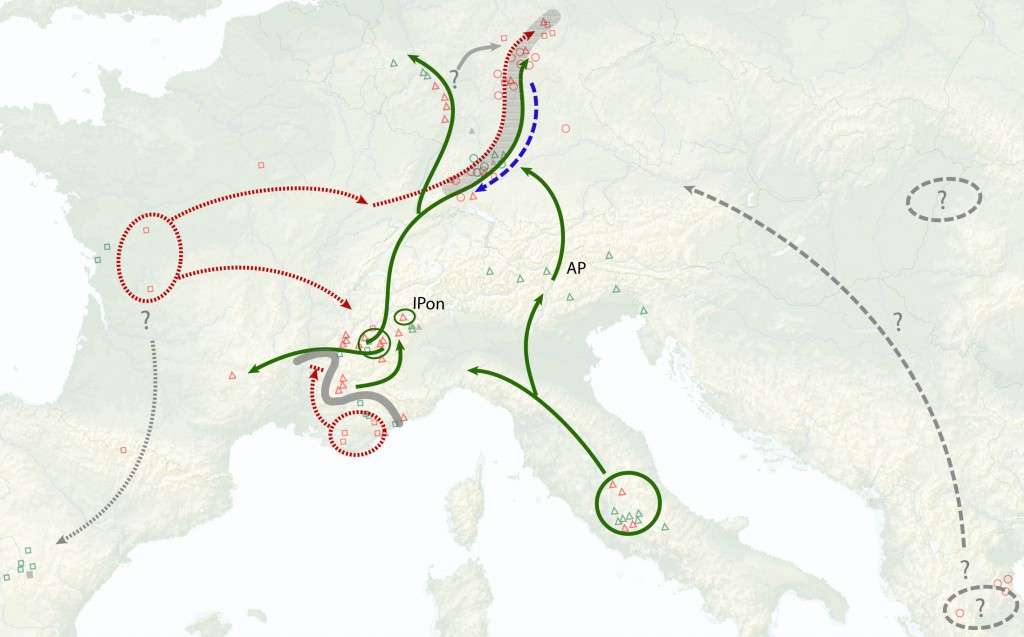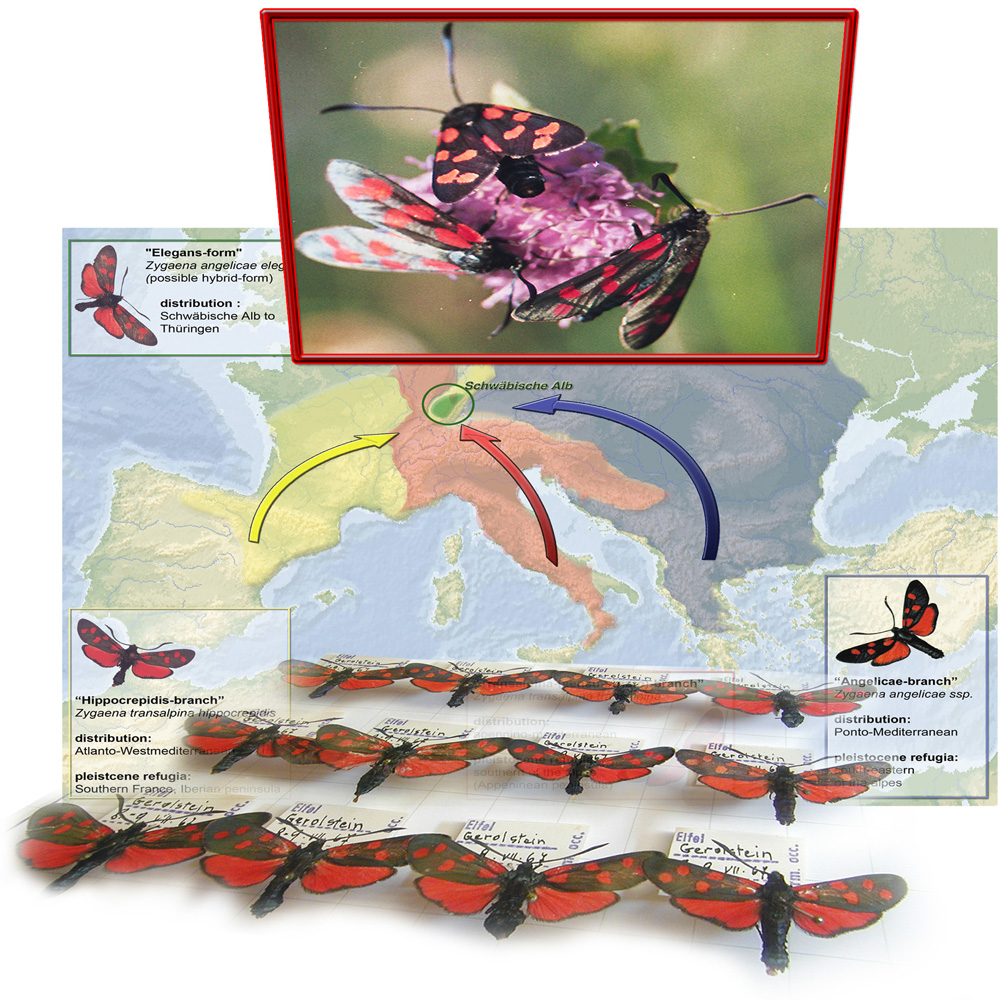Phylogeography of the Zygaena angelica/transalpina species complex
Background. The Pleistocene refugia hypothesis assumes that the fragmentation of once widespread taxa in isolated subpopulations during ice ages in Europe is largely responsible for the extent of their present genetic differentiation. Recent reviews of this idea indicate, however, that the actual phylogeographic history of many species might be more complex.
Background graphics. Burnet moths of the genus Zygaena, Fabricius 1775, form a monophyletic clade within the subfamily Zygaeninae (Niehuis et al., 2006). Species of this genus are restricted to the palaearctic region (Hofmann & Tremewan, 1996; Nauman et al., 1999). The two burnet moth species Zygaena transalpina/angelicae show a Eurasian distribution with Zygaena transalpina and its subspecies as the Western European and Italian representatives and Zygaena angelicae and its subspecies as Eastern European representatives. More specifically, (Hofmann, 1994) recognizes three branches within this complex (see figure right), the ponto-mediterranean “angelicae”-group, the adriato-mediterranean “transalpina”-group and the atlanto-mediterranean “hippocrepidis”-group.
The model organism. Burnet moths of the Zygaena transalpina-complex represent a group of closely related taxa, which is generally referred to as a typical example in support of the Pleistocene refugia hypothesis. To test whether this concept does indeed properly explain the pattern of genetic differentiation in these moths, we re-investigate here their phylogeography using mitochondrial sequence data.
Conclusions. Phylogenetic and nested clade analyses of 476 samples from 55 localities taken from Southern and Central Europe reveal that the Zygaena transalpina-complex consists of three distinct haplotype clusters, which geographically correspond with possible refugia in Western Europe, Italy, and the Balkans. A synthesis of the molecular mt-data with a geometric morphometry dataset of 901 specimens of 101 localities significantly supports this molecular result. However, it also suggests that the observed genetic differentiation has predominantly originated by micro-allopatric differentiation in smaller refugia, located predominantly in the Southern foothills of the Alps, and by large scale range oscillations. The so-called “grasshopper” model, predicting the main routes of postglacial colonization, seems only partly applicable in burnet moths.

Concluded scenario. Phylogeography based on molecular and morphometric data. The “hippocrepidis”-branch (red dotted lines) spreads from Western Europe, the“transalpina”-branch (green bold lines) moves in two separated flanks from South Italy to Central Germany. Haplotypes from the “angelicae”-branch migrated very likely from eastern Germany to Southern Germany representing now the distinct Zygaena angelicae elegans form. Grey lines and question marks indicate routes or refugia assumed on scattered samples, this was respectively the case for the “angelicae”-branch. The inferred glacial refugia are marked by circles. The grey, broad area in Central to Southern Germany displays the zone of secondary contact for all three branches. New patterns to existing hypotheses are 1) the multiple refugia for the “hippocrepidis”-branch (Western and Southern France), 2) the distinct spreading of the “transalpina”-branch, one eastern group expanded through the Alps (AP = alpine penetration), 3) the inferred refugium within the western Alps for specimens of the “transalpina”-branch (IPon). The grey borderline in the South-western Alps depicts the possibly blocked passages for Z. transalpina and Z. hippocrepidis.
See also publications
von Reumont BM, Struwe J-F, Schwarzer J, Misof B (2012): Phylogeography of the burnet moth Zygaena transalpina-complex: molecular and morphometrical differentiation suggests glacial refugia in Southern France, Western Europe and micro refugia within the Alps. Journal of Zoological Systematics and Evolutionary Research 50 (1) 38-50.
